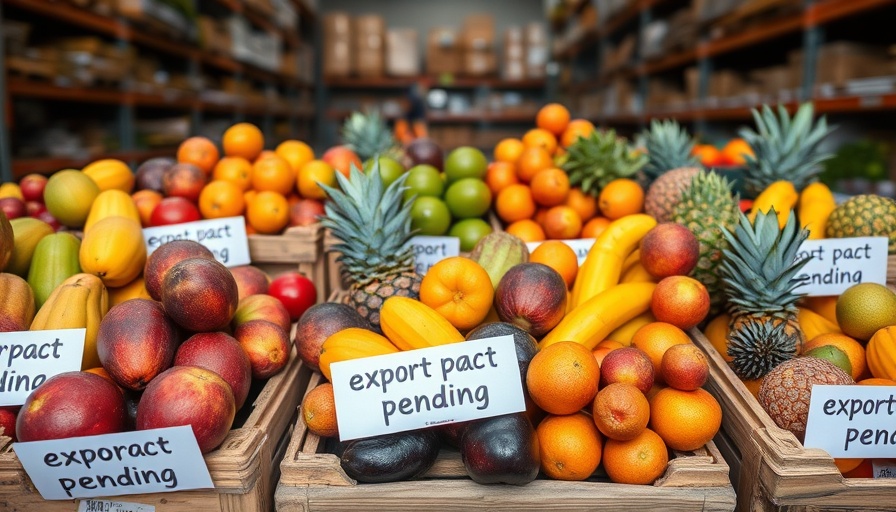
Understanding the Tariff Amendments of 2025: A Critical Overview
The 2025 Tariff Amendments, recently published in the Government Gazette No. 52263, constitute a vital component of South Africa's Customs and Excise Act, 1964. These amendments, particularly Notice R.5978, impose significant changes concerning the importation of screws and bolts from the People’s Republic of China. The implications of these amendments resonate far beyond mere compliance; they reflect broader economic strategies and trade policies responsive to international market dynamics.
Why Tariff Regulation Matters
Tariff regulations are essential for governing trade conduct among nations. They are designed to protect local industries from unfair competition and address issues like anti-dumping—which this specific amendment addresses about certain screws and bolts. Notably, the implementation moving forward requires businesses to navigate not only their operational alterations but also their compliance with increasingly strict regulations regarding imported goods.
Economic Context: Anti-Dumping Measures
As outlined in the latest amendments, anti-dumping duties are being introduced to combat the surge in imported products which could unfairly undermine local markets. While these measures protect domestic manufacturers, they may also lead to increased prices for consumers. It raises an important question: how will these tariffs impact the average citizen’s purchasing power and the broader economy as a whole?
Impacts on Importers: A Double-Edged Sword?
While the intent behind imposing anti-dumping duties is to safeguard local manufacturers from predatory pricing by foreign companies, it can also complicate the operational landscape for importers. The new amendments require them to stay vigilant regarding compliance timelines and documentation processes. Companies may also have to reassess their supplier contracts and pricing strategies to accommodate the newly imposed tariffs. This could potential lead to increased costs, ultimately passed on to consumers.
A Broader Look: The African Continental Free Trade Area
The amendments also represent a larger shift in South African trade policy, especially in light of the African Continental Free Trade Area (AfCFTA) Agreement. These changes are not summered to the steel industry; they reflect a broader intention to integrate regional trade practices. Steps have been taken towards modifying tariffs in line with AfCFTA objectives, ensuring a streamlined approach to intra-African trade. This situation presents an opportunity for local businesses to export more effectively while also adapting to collaborative economic frameworks.
Future Predictions: What Lies Ahead for South African Trade?
Looking ahead, it is crucial to analyze the potential long-term impacts of these tariff amendments on the South African economy. As countries worldwide grapple with trade tensions, South Africa’s approach within this new legislative framework could offer insights. Will the increased duties reignite local production capabilities or deter international partnerships? Adaptation strategies will prove essential for navigating this evolving landscape.
Final Thoughts: The Importance of Staying Informed
As the tariff amendments come into effect, it is crucial for professionals in the import/export sector to educate themselves on the implications for their businesses. Understanding these changes not only fosters compliance but also promotes strategic planning in an increasingly complex import environment. Engage with professional networks, consulting firms, and customs experts to ensure you are abreast of these developments, leveraging every opportunity they may present.
For those affected by these changes, exploring further resources and consulting with experts is recommended to maximize options under the new tariff regime. Being informed can provide a competitive edge in navigating the complexities alive in today’s trade environment.
 Add Row
Add Row  Add
Add 




Write A Comment